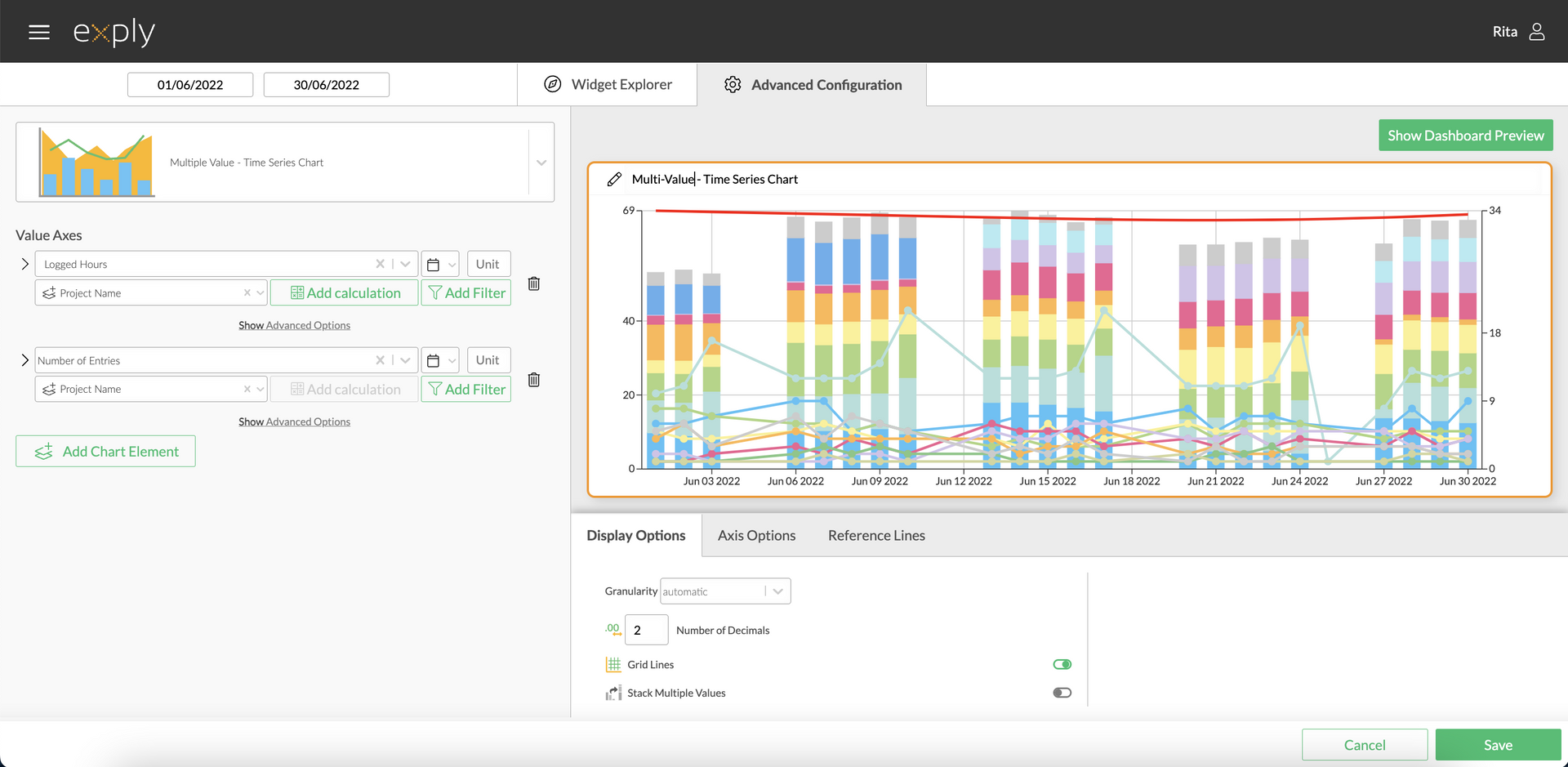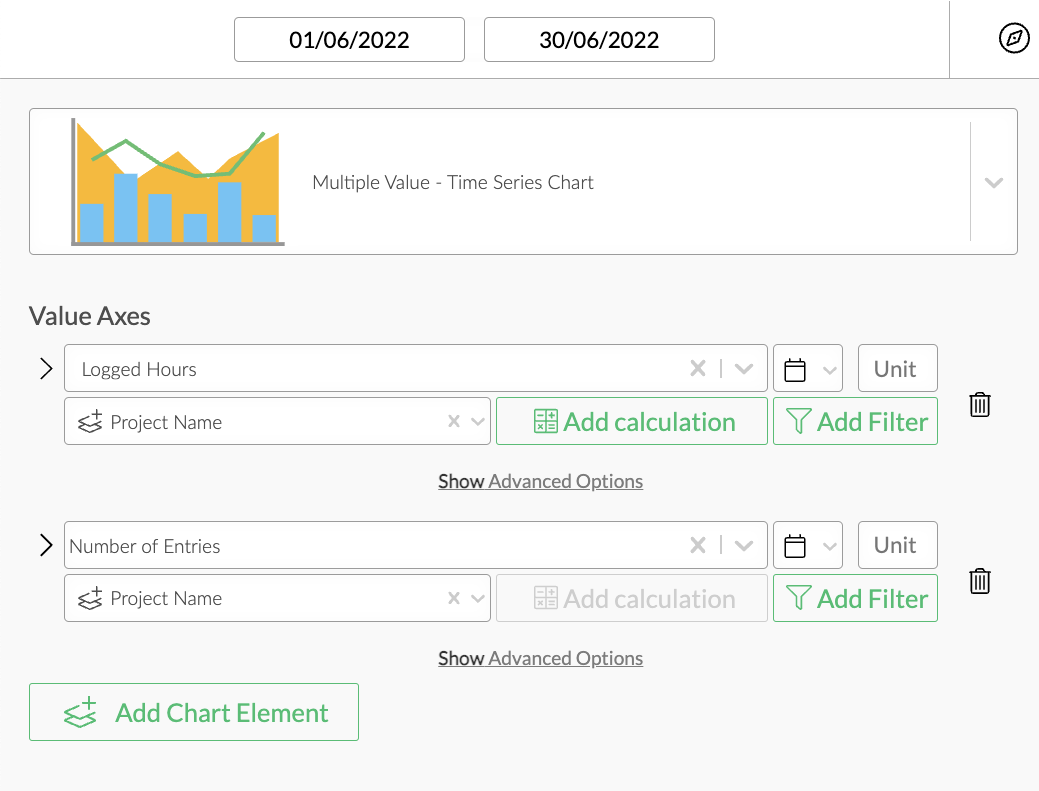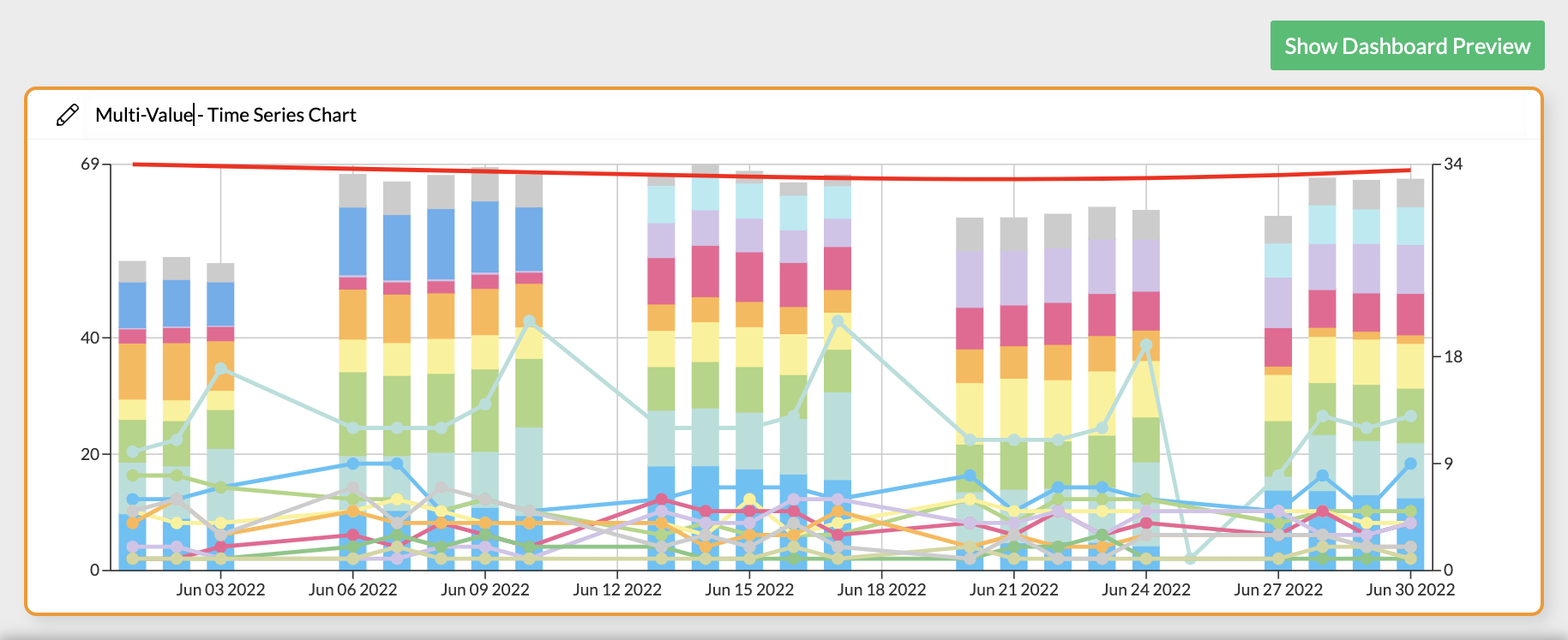Multi-Value - Time Series Chart
Overview
All time series charts display data with time on the x-axis and your chosen value on the y-axis. In addition you can pivot your data by a second dimension by selecting a stacking field.

Multi-Value Time Series Chart Advanced Configuration Screen
Options
Every widget comes with a different set of options. All available options are described in the following passage.
Data Options
From top to bottom, the left side of a widget always starts with the value field configuration.
In the multi-value time series chart configuration you can set a value, its date field (calendar icon on the right side next to the value field) and a custom unit.
Below the value field, you can optionally choose a stacking field, which acts as a second pivot field in addition to the timeline.

Multi-Value Time Series Chart Data Options Overview
Value Filters
As in every other chart, you can apply value filters to your chosen value in the multi-value chart. Find out more about how to configure them in the Filters section!
Calculations
You can add calculations to your value fields. To find out more about how to implement them, check out the Calculations section.
Display Options
Display options are used to modify the appearance of a widget. The following options are available:
If you're using the multi-value time series chart to visualise the same value grouped by different pivot fields, you can choose to stack them atop one another.
For better readability you can also decide whether you'd like to see the grid lines in your chart.
You'll find more detailed information on the options concerning key value visualisation below.

Multi-Value Time Series Chart display options
Key Value Visualisations
Reference Lines & Axis Options
You can add an unlimited number of reference lines to your chart. In multi-value time series charts you can also give the axes custom labels.

Add reference lines to your Multi-Value Time Series Chart to visualise important aspects.
Trend Lines

A Trend Line is part of the Multi-Value Time Series Chart by default